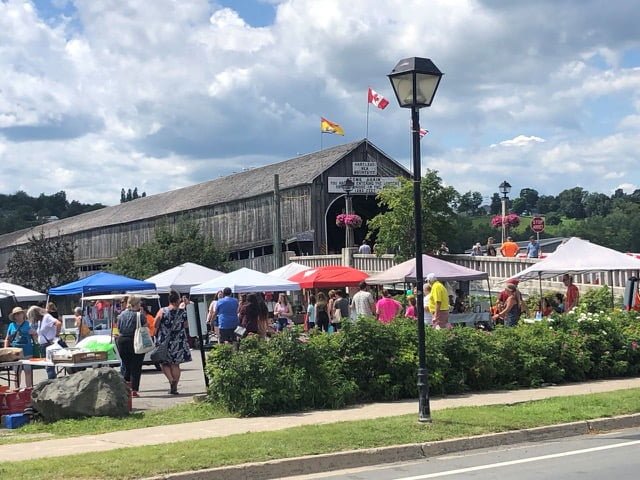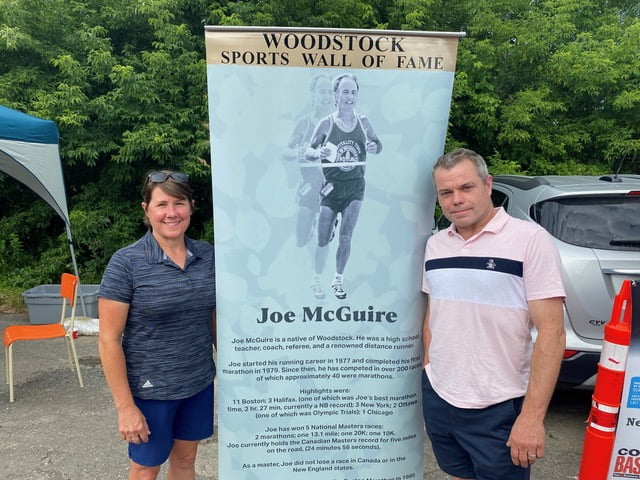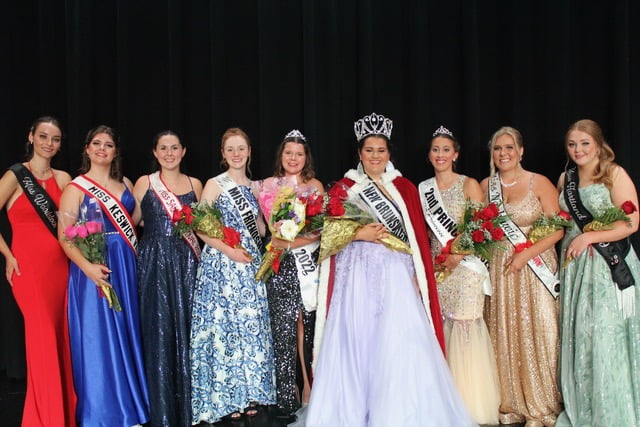Action group appears before Woodstock council over Covered Bridge Potato Chip plant noise, odours
The Woodstock Town Council meeting on Tuesday, Oct. 28, was a full house, with residents from the southern part of town filling seats. People were there to support Joanna Harrison and Devan Gunaseelan, who spoke on behalf of their neighbourhood action group.
Their group, Our Town, Our Voice, was formed in response to concerns about how the nearby Covered Bridge Potato Chip plant’s operation on Charles Street had negatively altered their quality of life.
Representing an area spanning most of the southern part of town, from Charles Street, the Poole Street Subdivision, Houlton Street, and beyond, the two spokespersons described how peaceful their community used to be and how let down the residents have felt since the chip plant began altering the landscape and the feel of the neighbourhood.
“The plant’s operations have seriously disrupted our homes, health and daily lives. Yet we’ve seen little visible action from the town to address these impacts,” stated Harrison, while addressing the council.
Some members of their group have lived in that area for 50 years, while others are new homeowners, having purchased a house adjacent to the plant just a few months before renovations and production began.
Until this spring, residents had said that living adjacent to the industrial park had not been a problem.
“When we purchased our home eight years ago, we had no idea an industrial park bordered the neighbourhood,” said Gunaseelan. “The trees in front of our home created a natural buffer, and we never imagined a large factory would one day stand just beyond them.”
The two representatives shared how residents felt misled about how changing the town’s zoning laws to include ‘food processing’ would affect their community. They expressed concerns that the council had chosen to allow the changes, prioritizing tax revenue and economic growth over the impact on residents.
In their presentation, Harrison and Gunaseelan argued that the Covered Bridge Potato Chip operation is far larger than the ‘Business Park Model,’ hosting ‘light industry’ initially intended for that area, as outlined in the town’s municipal plan. Overall, residents believe the plant is incompatible in its current location.
Trouble began for residents when, earlier this year, they noticed the natural buffer zone of mature trees, many of which had stood there for more than 40 years, had been felled by the company. Soon after, they noticed several large metal buildings on the site, followed by the onset of constant noise and odours.
The plant now operates 24 hours a day, Monday through Friday. The residents say constant noise, day and night, is making living and sleeping difficult. They also complain of unpleasant smells from the frying oil, and are concerned about oil residue on their cars and homes.
Homeowners fear that the plants’ noise and air pollution will damage their health and decline property values. Residents say that industrial lighting, which remains on from dusk till dawn, along with heavy truck traffic at all hours, is making it difficult to sleep.
People living in the area say they are frustrated and feel their concerns haven’t been ‘heard’ until this point. Harrison asked for a change moving forward.
“We want transparency on what’s happening. We are citizens. We pay our taxes. We contribute back to the community. We expect the same curtesy as any other resident in any other area.”
Harrison reiterated that the group has no issue with the company itself.
“We do respect the workers at Covered Bridge,” she said. “We do want economic growth. We just don’t feel it’s the right place to do that.”
Councillor Julie Calhoun-Williams asked them if the buffer had made a big difference in how much they noticed the operation before it began. Gunaseelan and Harrison explained that the company removed the natural buffer zone before operations ramped up, so they had no way to compare the pre- and post-conditions.
While the presentation from ‘Our Town, Our Voice’ was made within the first half hour of council, CAO Allan Walker presented the town’s response and report on the Covered Bridge Potato Chip Company at the very end of the council’s session.
In his report, Walker outlined the sequence of events from the loss of their Waterville factory to the present day, noting the complaints received over that time and the actions taken so far.
He shared that the town is currently discussing options with Covered Bridge Potato Chips for replacing the buffer zone and that the company is willing to collaborate with them to develop a solution. Walker said he has and will continue to follow up with the Department of Environment and Local Government (ELG). So far, the ELG has not reported any violations.
All councillors agreed that they must find a solution to the problems addressed by the residents as quickly as possible. Councillor Michael Martin suggested placing a large mound of dirt in the buffer zone as a temporary solution for residents until a more permanent arrangement can be made. Councillor Calhoun-Williams wanted to finalize deadlines to encourage a solution and expedite the process as quickly as possible.
“It’s tough to see that buffer removed,” said Councillor Will Belyea. “It’s kind of mind blowing why that ever happened.” He noted that it was essential to work with the neighbourhood as they figure out a solution, moving forward.
On top of following up with the company and ELG, the council agreed that they need to revisit some of the bylaws that led to this issue, in an effort to prevent similar problems from occurring in the community again—specifically, their noise bylaws, which currently don’t cover any industry or the industrial park’s buffer zone.
“There’s always steps and processes, and it takes time, which I know for the public can be very frustrating to hear at this point in time,” said Mayor Jones in an interview with the River Valley Sun after the council meeting. “Hopefully, as you heard around the table that we acknowledge that this needs some attention. We want to keep the community informed and work to try and find a solution that’s going to work. We’ve got to try that. We’re required to try that.”
After hearing the council’s response, Gunaseelan and Harrison expressed appreciation for the council’s inquisitive questions and felt that they were taking their concerns seriously.
However, the “Our Town, Our Voice” representatives also expressed frustration over how often their complaints were being deferred to other departments, both during the council session and in emails over the past few months. The group plans to meet as soon as possible to determine its next steps in advocating for its community.
“We are not going away; we can’t. We live here,” said Gunaseelan, quoting his group’s handout.
In response to the River Valley Sun’s questions regarding the removal of the buffer zone, despite the bylaw stating that one is required, Town Clerk Christine Jewett sent an email.
“Section 5.5 of Zoning bylaw Z-501 addresses the requirements of a buffer zone and reads: “Any new commercial or industrial use located adjacent to a residential use shall have, at or near the boundary of the lot on which it is situated, a minimum of a 5-metre wide buffer delineated with a fence or landscaped buffer, including a hedge or shelter belt of trees,” she explained.
Jewett wrote that the section refers to “new industrial use” requiring a buffer, “with the implication clearly being that an existing use does not.”
She said the argument had been made by the owner, Covered Bridge Potato Chips, that this was “an existing site, and the expansion was under the existing owner,” and no buffer would be required.
“While there is potential merit to that argument, staff adopted the strictest interpretation, determining that while the site and ownership was pre-existing, the change from storage to production was a “new industrial use” and therefore section 5.5 applied, and they were required to have a buffer in place meeting the regulations,” she wrote.














